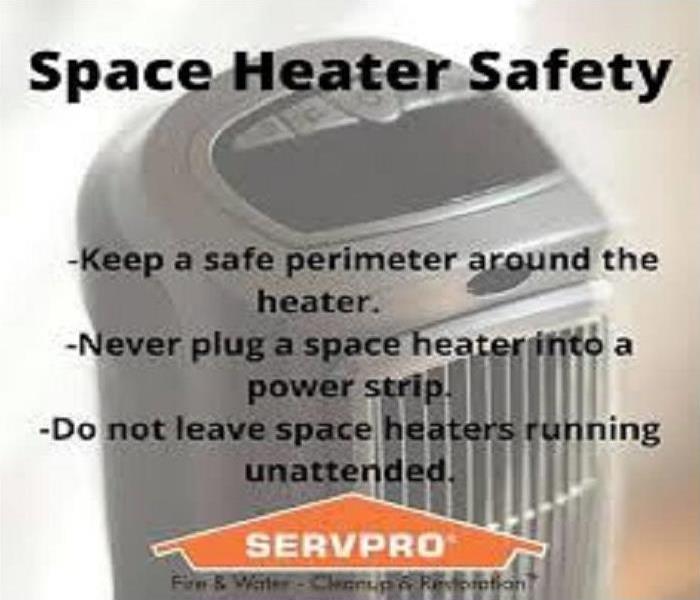Space Heater Hazards
2/3/2021 (Permalink)
As colder weather starts to set in, SERVPRO of Champaign / Urbana would like to encourage you to practice space heater safety and know the potential risks associated with home heating equipment. Home fires occur more in the winter months than any other time of year. According to the National Fire Protection Association, heating equipment is one of the leading causes of home fire deaths and space heaters account for 4 out of 5 home heating fire deaths.
Follow these tips to stay safe while heating your home:
- Have heating equipment and chimneys cleaned and inspected annually by a qualified professional.
- Keep anything that can burn at least 3 ft. away from heating equipment, like the furnace, fireplace, wood stove or portable space heater.
- Portable space heaters should be turned OFF every time you leave the room and before going to bed.
- Never plug a space heater in a power strip.
- Install carbon monoxide detectors to avoid carbon monoxide poisoning.
- Never use an oven to heat your home.
For portable electric heaters:
- Place them on a solid, flat surface, away from high traffic areas and doorways.
- Use and purchase heaters with an automatic shut off so if they are tipped over they will shut off.
- Plug power cords directly into outlets and never into an extension cord.
- Inspect for cracked or damaged, broken plugs or loose connections; replace before using.
Heating Fire Facts:
- Most home heating fire deaths (86%) involved stationary or portable space heaters.
- The leading factor contributing to home heating fires (27%) was failure to clean, principally from solid-fueled heating equipment, primarily chimneys.
- The leading factor contributing to ignition for home heating fire deaths (54%) was heating equipment too close to things that can burn, such as upholstered furniture, clothing, mattress, or bedding.
- Nearly half (48%) of all home heating fires occurred in December, January and February.
In the case of fire and water damage, SERVPRO of Champaign / Urbana and our team of experts have the equipment, tools, training and expertise to take control of the situation and begin the water and fire damage restoration process before advanced secondary damage begins to take place.





 24/7 Emergency Service
24/7 Emergency Service
